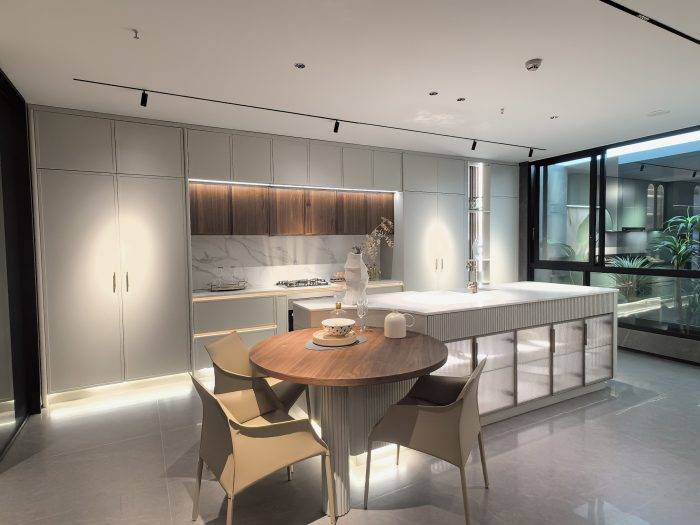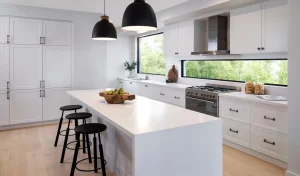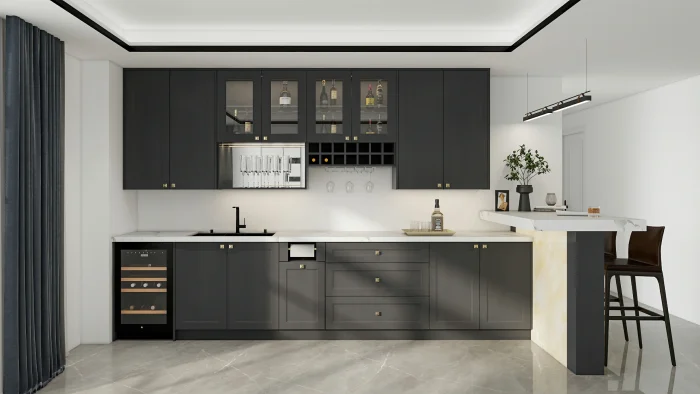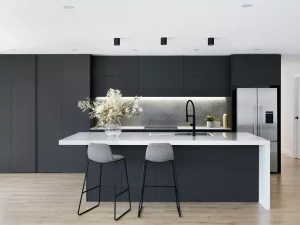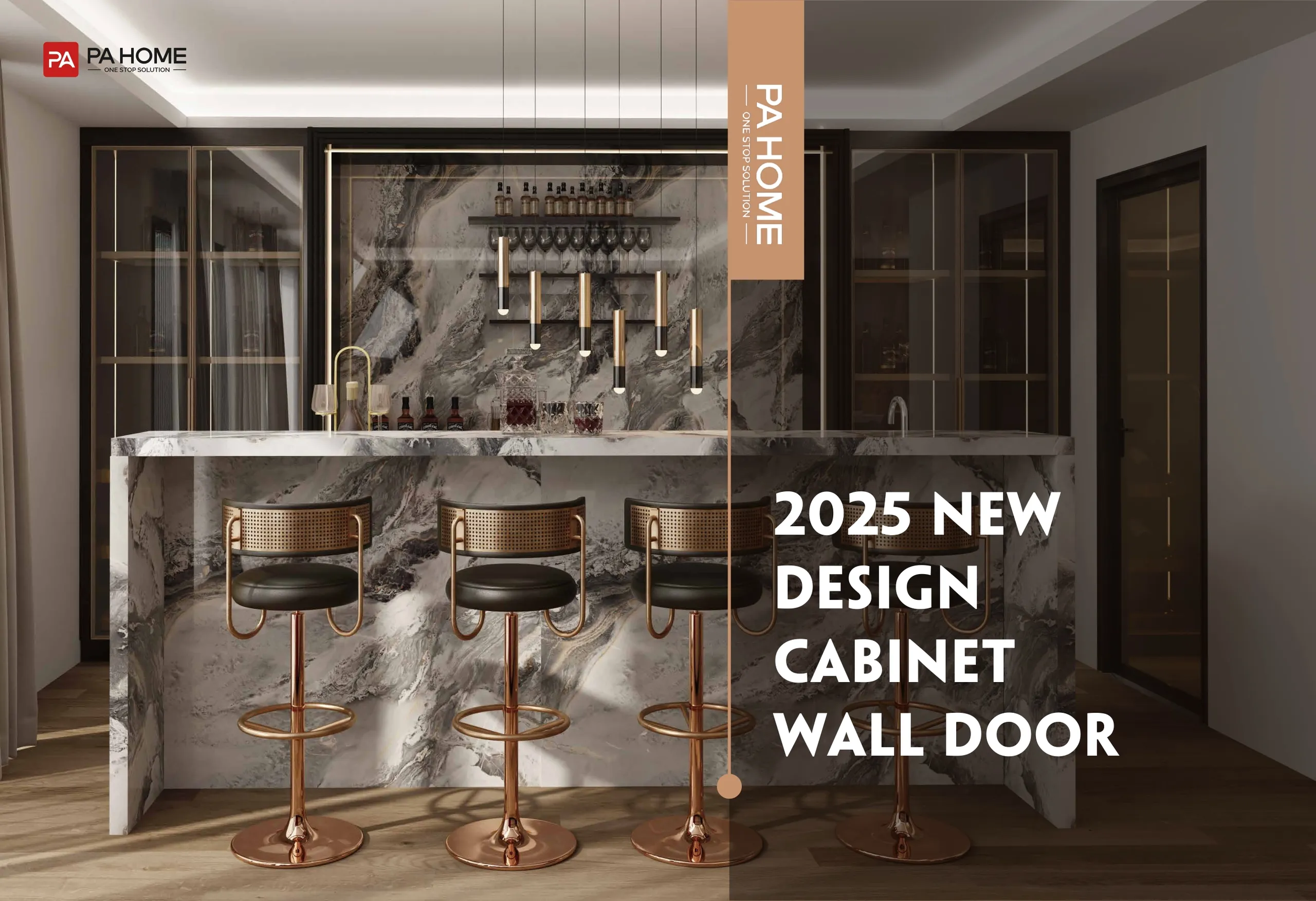Introduction
The Basics of Kitchen Zoning
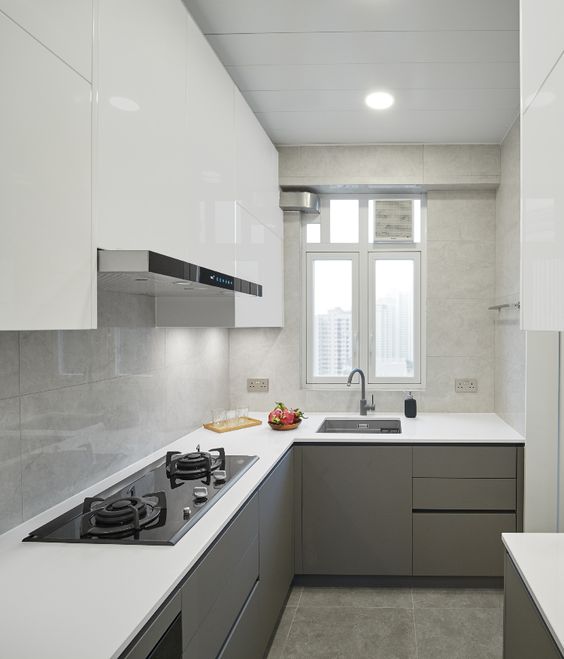
What is Kitchen Zoning?
First kitchen zoning refers to the partitioning of your kitchen into separate areas or “zones,” each dedicated to a specific function. The zones can include a prep area, cooking area, baking area, and cleaning area, among others. Zoning optimizes kitchen workflows and contributes to better organization and functionality.
Why is Zoning Important?
Effective zoning can turn a chaotic, cluttered kitchen into a streamlined, functional space. It maximizes efficiency by reducing the amount of movement required to complete tasks. With proper zoning, everything you need for a specific task will be at arm’s length.
The Core Zones
Preparation Zone
Cooking Zone
Situate your stove, oven, and microwave in this area. Custom kitchen cabinets can offer spice racks and pull-out drawers for pots and pans, making it easier to grab what you need while cooking.
Storage Zone
From dry goods to dishware, your storage zone will hold most of your kitchen items. Custom kitchen cabinets can be designed to include pantry pull-outs, deep drawers, and even wine racks.
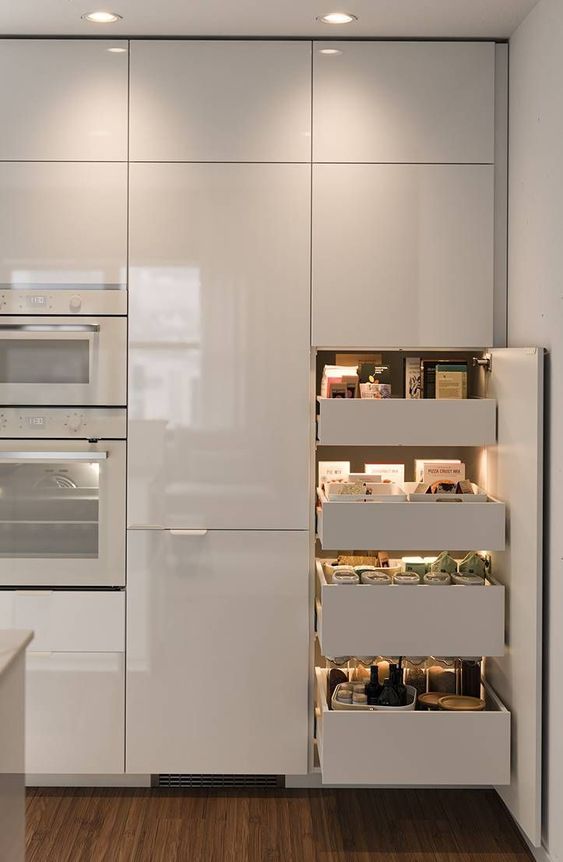
Tips for Effective Kitchen Zoning
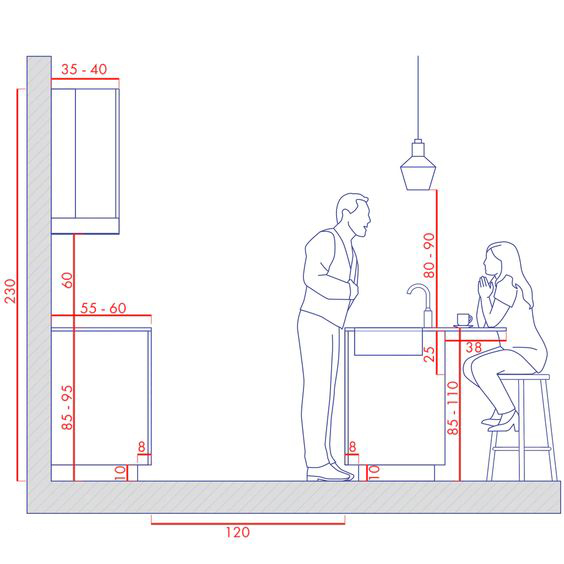
Measure Your Space
Then before you jump into designing custom kitchen cabinets or picking out appliances, it’s crucial to measure your available space. This will help you allocate enough room for each zone.
Prioritize Workflow
Think about the steps you take when preparing a meal.And place your zones in a way that complements your natural workflow. For example, it makes sense to have the prep zone near the cooking zone.
Customize Your Cabinets
Custom Kitchen Cabinets: A Game-Changer in Kitchen Zoning

Why Choose Custom Cabinets?
Unlike stock cabinets, custom kitchen cabinets are designed to meet your unique needs. And they offer unparalleled versatility, allowing you to maximize both function and form.
Advantages of Custom Cabinets in Zoning
- Optimized Storage: Tailor your cabinets to fit appliances and kitchen utensils perfectly, making the most of your space.
- Consistent Aesthetic: Custom cabinets can be designed to match your kitchen’s overall aesthetic, creating a seamless look.
- Enhanced Accessibility: Features like pull-out trays, lazy Susans, and built-in dividers make it easier to access what you need.
How to Integrate Custom Cabinets Into Each Zone
- Preparation Zone: Use custom cabinets with built-in knife slots and cutting boards.
- Cooking Zone: Consider pull-out racks for spices and oils.
- Cleaning Zone: Incorporate a pull-out trash bin and compartments for cleaning and supplies.
- Storage Zone: Utilize custom pantry cabinets with pull-out baskets for easy access.
Real-Life Examples of Zoned Kitchens With Custom Cabinets
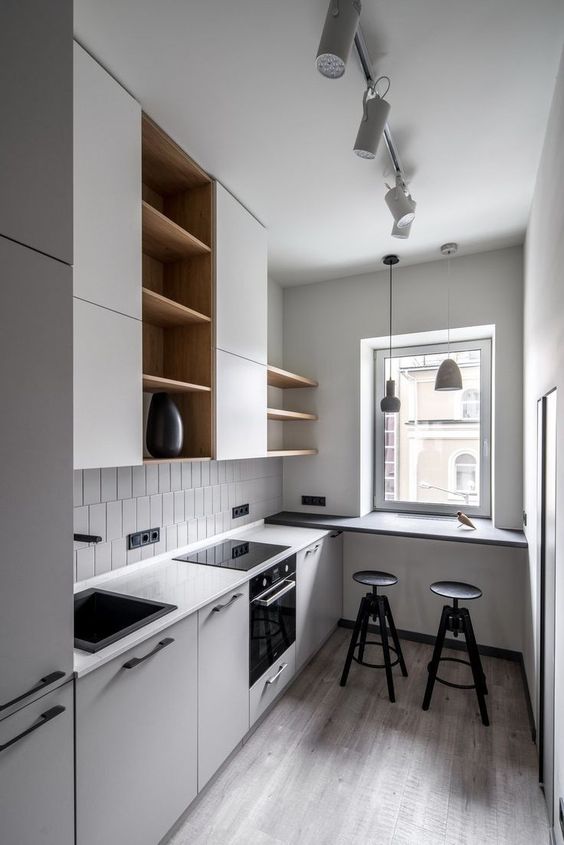
- The Efficient Family Kitchen: In this design, custom kitchen cabinets feature kid-friendly drawers in the lower sections, making it easy for kids to access what they need without disrupting the overall kitchen organization.
- The Baker’s Paradise: Here, the baking zone is equipped with custom cabinets featuring built-in racks for baking sheets and a pull-out pantry for flours and sugars.
- The Small Kitchen: In a limited space, custom cabinets can be designed to maximize every inch, with features like pull-out pantry systems and corner cabinet solutions.
Conclusion
Zoning your kitchen is essential for both efficiency and aesthetics. When designed thoughtfully, each zone can significantly improve your kitchen’s functionality. Custom kitchen cabinets play a crucial role in achieving this balance. Not only do they offer optimized storage solutions, but they also contribute to a consistent and beautiful kitchen design.
By investing in custom kitchen cabinets as part of your zoning plan, you can create a kitchen that’s both beautiful and highly functional. It’s a one-time investment that pays off every time you set foot in your culinary sanctuary.
FAQ
What are kitchen zones?
Kitchen zones are designated areas within your kitchen designed for specific tasks such as cooking, food preparation, and cleaning. Creating well-defined zones improves both efficiency and workflow, making your time in the kitchen more productive and enjoyable.
What are the 6 zones of the kitchen?
Cooking Zone,Preparation Zone, Cleaning Zone, Storage Zone, Cold Zone, and Serving Zone
How many zones should a kitchen have?
Generally, a well-designed kitchen should have at least three main zones: the cooking zone, the preparation zone, and the cleaning zone. However, the number of zones may vary based on individual needs and the size of the kitchen.
What are the 4 different zones you should have in your kitchen for preparing different types of food and storing cleaning products?
Raw Food Prep Zone, Cooked Food Prep Zone,Non-Food Prep Zone,Cleaning and Storage Zone
How can I optimize small kitchen spaces?
For small kitchens, consider multipurpose zones and fold-away furniture. Use vertical space for storage and choose appliances that can be tucked away when not in use to maximize space.

